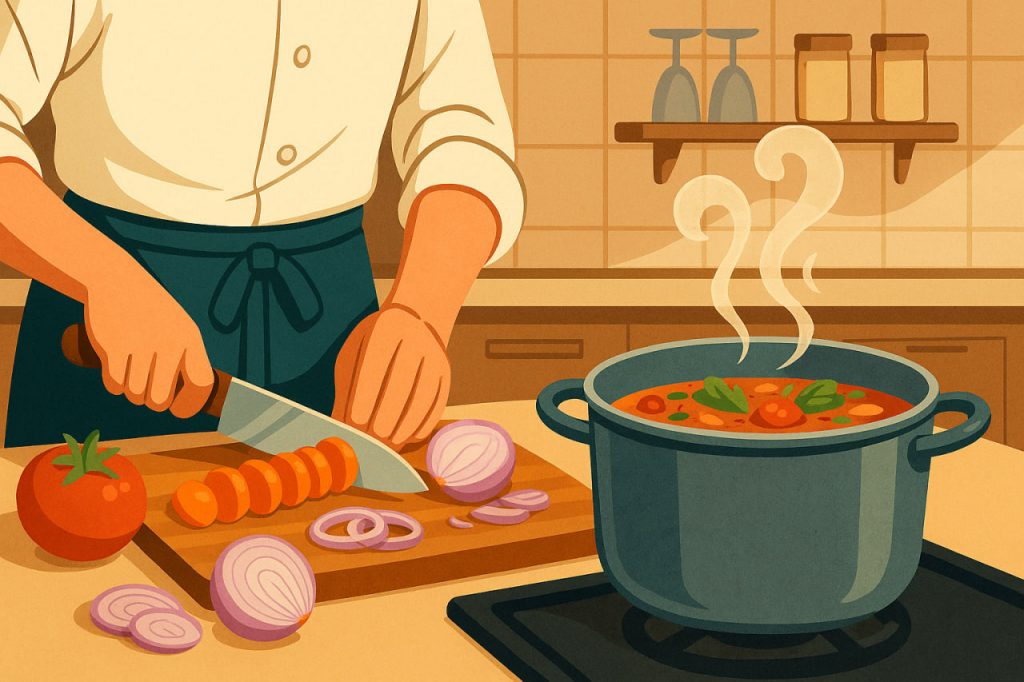Food preparation techniques have a direct impact on the taste, texture, and even nutritional value of a dish. One of the most common culinary practices is chopping or cutting foods into smaller pieces before cooking. Though it may seem simple, this process plays a crucial role in both cooking efficiency and food quality.
1. Faster and More Even Cooking
- Smaller pieces of food heat more quickly, reducing overall cooking time.
- Uniform cuts ensure even cooking, preventing situations where one part is undercooked while another is overcooked.
- This is especially important for vegetables, meat, and fish, where precise cooking affects both safety and flavor.
2. Enhanced Flavor Release
- Chopping increases the surface area of ingredients, allowing more flavors and aromas to be released during cooking.
- Garlic, onions, and herbs, for example, release natural oils and compounds more effectively when finely chopped, enriching the dish’s aroma.
- Spices and seasonings adhere better to smaller food surfaces, enhancing taste.
3. Better Texture and Consistency
- Cutting ingredients helps achieve the desired texture, from smooth soups to crunchy stir-fries.
- Some recipes depend on consistent cuts for balance — for example, salads, sushi, or stir-fried dishes.
- Purees and sauces require ingredients to be cut finely to ensure a smooth result.
4. Improved Nutrient Absorption
- Breaking down foods mechanically helps release nutrients, making them easier to absorb.
- For example, chopping tomatoes enhances the availability of lycopene, while crushed garlic releases allicin, both beneficial compounds for health.
5. Culinary Aesthetics and Presentation
- Uniform slices and cubes make dishes visually appealing.
- Traditional cuisines often emphasize specific cutting styles, such as julienne or dice, to add cultural and aesthetic value to meals.
6. Practical Benefits in the Kitchen
- Chopping reduces cooking time, saving energy and making meal preparation more efficient.
- Smaller cuts make large or tough foods, like pumpkins or meat, easier to handle and portion.
- Pre-cut ingredients allow for smoother multitasking during cooking.
Conclusion
Chopping food before cooking is not just a convenience — it is a fundamental step that affects cooking speed, flavor, texture, nutrient release, and presentation. From making dishes more aromatic to ensuring even cooking, this simple practice plays a central role in turning raw ingredients into delicious and healthy meals.
Glossary
- Surface area – the outer layer of an object; increasing it allows faster cooking and flavor release.
- Lycopene – an antioxidant found in tomatoes that becomes more available after chopping or cooking.
- Allicin – a health-promoting compound released when garlic is chopped or crushed.
- Julienne – a culinary cutting technique where food is sliced into thin strips.
- Consistency – the uniform texture or structure of a dish.


